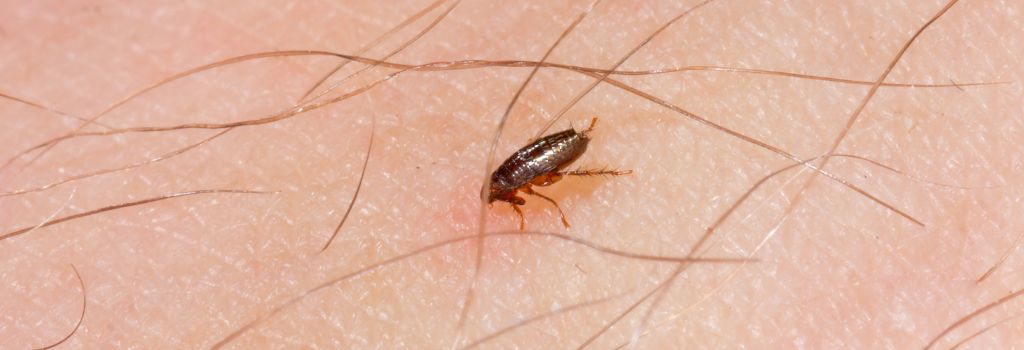When it comes to fleas and ticks, the conversation about prevention and treatment usually centers around dogs, and to many pet owners that makes sense. After all, dogs spend a lot of time outside for bathroom breaks, walks, and playtime and frequently spend time with other dogs at boarding facilities and dog parks, making flea and tick prevention more necessary for them, right? Not quite.
Fleas and ticks are a big issue for cats too, and owners should be paying just as much attention to their cat’s flea and tick prevention as they do for their dogs. Previous research studies analyzing the prevalence of flea infestations in cats and dogs have found that populations of cats more commonly had fleas than dogs, due to the roaming nature of cats when they are outdoors.
Fleas and ticks can affect any cat of any age, so it’s crucial for owners to stay on top of flea and tick prevention for their cats during every stage of their life. We’ll break down how fleas can affect your cat, common ways cats pick up fleas and ticks, and what you and your veterinarian can do to stop current infestations and keep future ones from occurring.
How Fleas and Ticks Impact Your Cat’s Health
Veterinarians don’t harp on pet owners about keeping up with flea and tick prevention for no reason. While they may be small, fleas and ticks can create a number of health issues for your cat, affecting different parts of their bodies and ranging from mild to severe.
- Skin irritation: Dermatological reactions are one of the most common and noticeable results of flea infestations in cats. Fleas bite and irritate your cat's skin, causing intense itching, redness, and potential hair loss, sometimes leading to skin infections. Some cats can even be allergic to fleas resulting in skin complications from flea allergy dermatitis.
- Blood loss: Both fleas and ticks feed on your cat's blood, which can lead to anemia, especially in severe infestations, particularly for kittens or elderly cats.
- Disease transmission: Ticks can transmit serious diseases like cytauxzoonosis (bobcat fever), mycoplasma, Lyme Disease, and Haemobartonellosis to your cat.

Signs & Symptoms Of Fleas and Ticks on Cats
There are a few tell-tale signs that indicate the presence of fleas and ticks on cats.
- Excessive scratching: This is the most common sign, often accompanied by visible flea dirt (tiny black specks) on the fur.
- Red, irritated skin: Look for redness, bumps, or sores on your cat's skin, especially around the base of the tail.
- Hair loss: Patches of hair loss can occur due to constant scratching and overgrooming.
- Lethargy: If the infestation is severe, your cat might appear lethargic and lose appetite.
How Do Cats Get Fleas And Ticks?
Fleas and ticks are a constant threat for cats year-round and can affect any cat, regardless of whether they live indoors or outdoors.
There are a number of ways cats can pick up fleas and ticks, ranging from brushing up against tall grasses outside to a guest even bringing them into your house. The most common ways fleas and ticks end up on your cat include:
- Contact with other infected animals: Cats can pick up fleas and ticks from other pets or wildlife when outdoors. Many feral cats do happen to have fleas because they don’t have owners to give them proper flea and tick preventatives and treatments, so if your outdoor cat regularly hangs around the local strays, they have a pretty good chance of picking up fleas.
- Environment: Fleas and ticks can live in the grass, soil, and even your home, readily transferring to your cat when they come into contact. Cats who live outdoors or even spend a lot of time outside are more prone to picking up fleas and ticks, especially in areas with warmer climates and open spaces, like fields with tall grass.
- Being carried inside by other pets or humans: Just because you have an indoor cat doesn’t mean they can’t be exposed to fleas and ticks! Fleas and ticks can easily be carried into your home on your shoes, socks, pants, or other items. They can also be brought inside by other pets, such as dogs.
What Should I Do If I Find Fleas Or Ticks On My Cat?
If you find evidence of fleas or ticks on your cat, contact your veterinarian immediately to get started on proper treatment. Working with your veterinarian closely to combat the current presence of any fleas or ticks is your best bet to completely eliminate the fleas or ticks and get your cat feeling more comfortable as soon as possible.
A veterinarian can provide tailored advice on the best products for your cat based on their age, breed, lifestyle, and health status. They can also answer questions about the products, their application, and their effectiveness.

Keeping your environment clean is an important aspect of not only managing fleas once your cat has already been infected, but also in preventing them from moving in in the first place. We recommend vacuuming frequently to remove dead insects and debris from your home. Wash bedding and toys thoroughly after each use.
Best Flea and Tick Treatments for Cats
In the clinic, so many of our clients ask us “What’s the most effective flea and tick treatments for cats?”
- Oral medications: These are safe for your cat and can be given as a treat or hidden in a small amount of canned food. Examples include Credelio and Capstar.
- Spot-on treatments: These topical liquids are applied between your cat's shoulder blades or upper neck. Examples include Imoxi, Revolution Plus, and Bravecto.
Over-the-counter flea and tick treatments are not recommended because they are often not strong enough, and they can be inconsistent in their effectiveness. Prescription treatments
We can recommend the most effective flea and tick preventative medication, which can be topical spot-on treatments or oral tablets, tailored to your cat's needs and lifestyle.
Why Flea and Tick Prevention for Cats Is Essential
Veterinarians don’t preach about the importance of cat flea and tick prevention for their own sake; flea and tick prevention for cats is essential because it protects your home, your cat, and even your own health.
In addition to the diseases, blood loss, and skin irritation we discussed, there are a few other health complications that can arise for cats as a result of the presence of fleas and ticks on their bodies. Fleas have the potential to carry tapeworms which a cat may ingest while grooming or biting to relieve the itch of a flea bite. These tapeworm infections can cause weight loss, vomiting, and digestive issues and will require additional treatment beyond what’s needed to take care of the fleas. Tick bites, on the other hand, have the potential to become infected, which may weaken your cat’s immune system and open the door for a number of secondary health complications to occur.
What most pet owners don’t realize is that their cat isn’t the one left affected and uncomfortable when there’s a flea or tick infestation. Fleas can easily jump from pets to humans, leading to itchy bites, skin irritation, and in rare cases, transmitting diseases like Bartonella. Ticks pose an additional threat as ticks can latch on to your pet to enter your home, potentially spreading Lyme disease or other tick-borne illnesses.
Once these pesky parasites are in your home, getting rid of them is easier said than done. According to the Centers for Disease Control, getting rid of fleas is a difficult process due to the long lifecycle of a flea. Cases of fleas that are considered moderate or severe can take months to eliminate and may require special cleaning protocols and a lot of time and resources.
So when it comes to fleas and ticks, remember, protecting your cat is protecting your family as well!
If you have questions and you'd like to reach out to us, you can call us directly at (561) 790 9225, or you can email us at [email protected]. Don't forget to follow us on social media Facebook, Instagram.

